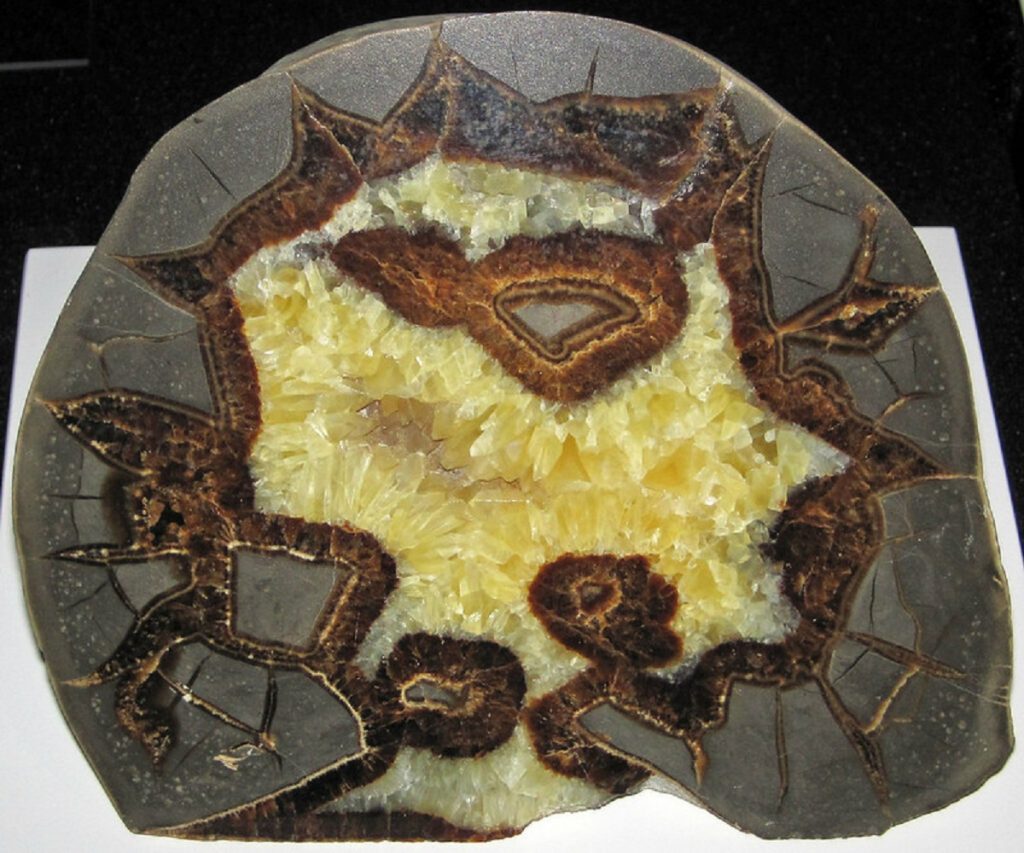
Septarian Nodules
Septarian nodules are an interesting find, whether you bought them or found them in the wild. There’s a lot more to them than meets the eye, however, especially for the rockhound interested in the natural formation of these fascinating stones.
So, let’s dig in and discuss the ins and outs of these contrasting nodules in our ultimate guide to septarian nodules.
What Are Septarian Nodules?
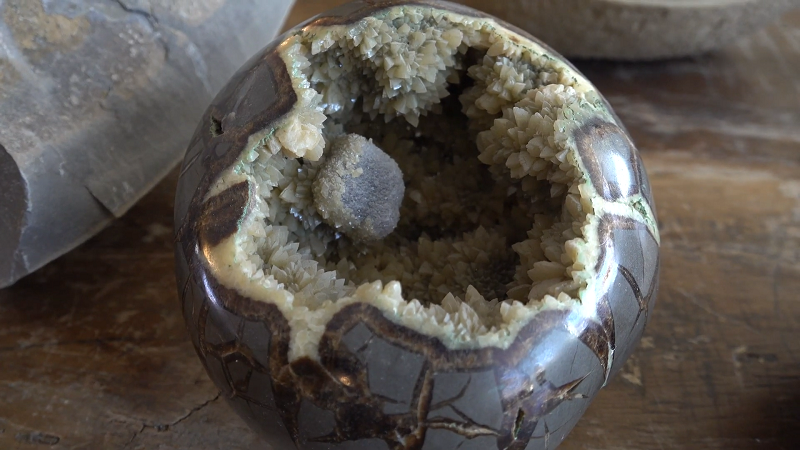
Septarian nodules are a type of concretion where mudstone of some kind is interspersed with calcite or another carbonate-rich mineral. The calcite portions follow the pattern of radiating cracks, which occur during the unique creation of these formations.
Septarian nodules consist of at least two minerals in every case. Often the larger portion is some sort of mudstone, while the interior will consist of calcite. The former is the “matrix” of the septarian nodule, while the latter is usually called the “septaria.”
In most cases, the matrix will be a grey stone. The interior varies in color from white to brown, with a bit of orange thrown in for good measure.
Septarian nodules appear as cracked egg-shaped stones in their host rock. The exterior matrix will often extend further than the inner septaria which give them a unique appearance when raw. They’re often cut in half, sliced, or polished to bring an even surface to both types of stone.
These nodules are popular with collectors, but they’re also of value to geologists. Their formation can suggest things about the local geology, and the study of their formation alone is a complex subject.
The nodules themselves are usually filled with calcite. They’ll have an aragonite layer in between the calcite and mudstone in many cases. It usually shows up as a dark brown layer.
On other occasions, they can be filled with minerals like barite or quartz. Some even have a hollow center just like any other geode, often lined with large crystals around a central vug. These can be breathtaking, even if you’re not a big fan of the “normal” septarian nodules.
These concretions are only frequently found in a few locations, although lesser amounts seem to be scattered in many areas where there was previously a lake or sea.
How Are Septarian Nodules Formed?
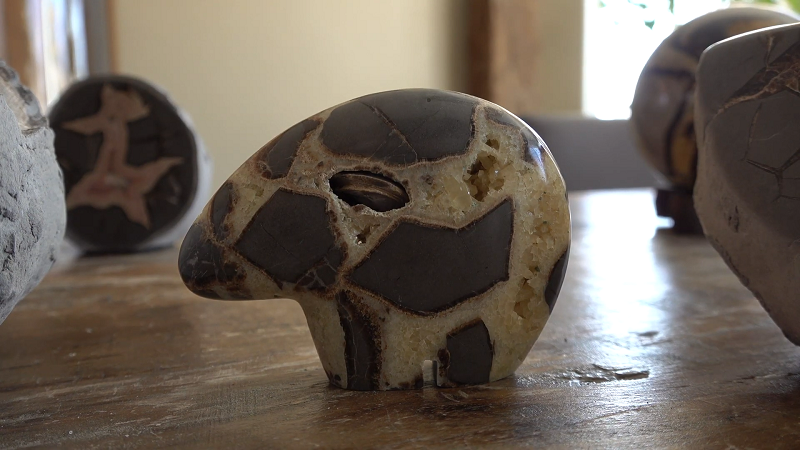
Septarian nodules are the subject of a lot of debate, or rather their formation is. There are a few different theories that give us a good idea of how they came to be and we’ll explore them in a moment.
Septarian nodules aren’t nodules in the same way that a thunderegg or other chalcedony-based stone nodule is. Instead, it may be more accurate to refer to them as concretions.
A concretion is a self-contained precipitation of a mineral formed around a nucleus. This makes them distinct from nodules, which are essentially replacements for voids, seams, and cracks in the bedrock filled in with mineral-rich water or gel.
Septarian nodules themselves are often found in mudstones of various types. Mudstone is the result of millions of years of pressure on mud or clay-based soil. They’re also a common find in shale, another rock that was formerly clay but mixed in with other minerals. Shales generally form into layers that are easily separated.
Most septarian concretions show evidence of an original organic nucleus. This nucleus would have gathered clay or sticky silt material around itself over time before ending up buried. Most of the common sites for septarian nodules to be found were previously underwater.
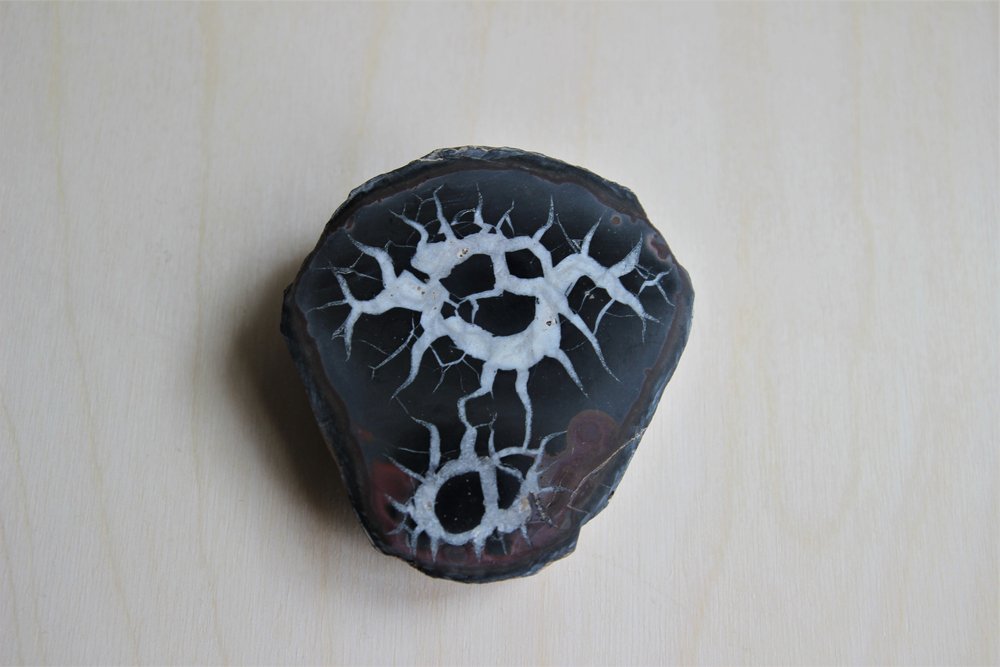
This ball of material would then have cracked somehow. There’s more than one theory as to why they cracked. One of the most common is the idea that the waters around these balls receded, creating cracks in the clay that were later filled in with sediment rich in calcium carbonate.
Another theory is that the rotting organic matter in the nucleus released gasses. These expanded in the internal part of the clay until the ball began cracking around the outside, allowing the calcite and aragonite in the interior layers to form over time.
The exact formation of these is still debated among actual geologists, in conversations that are above my pay grade. The previous link provides a good overview of how the discussions usually end up. Many mechanisms have been proposed, but the truth is we’re not quite sure exactly how they originally formed.
Or rather, how the cracks were formed. We do know that the interior of a septarian nodule is a sort of “pseudo-fossil” that’s created when the cracks are filled in with mineral-rich waters. This is generally calcium carbonate, but there are also siliceous examples out there.
What we do know is that they formed when the area was under water, and often at depths as shallow as 10 meters. They’re often “young” compared to most of the stones that we bring home, but they’re still formed on a geologic time scale.
Where Can I Find Septarians?
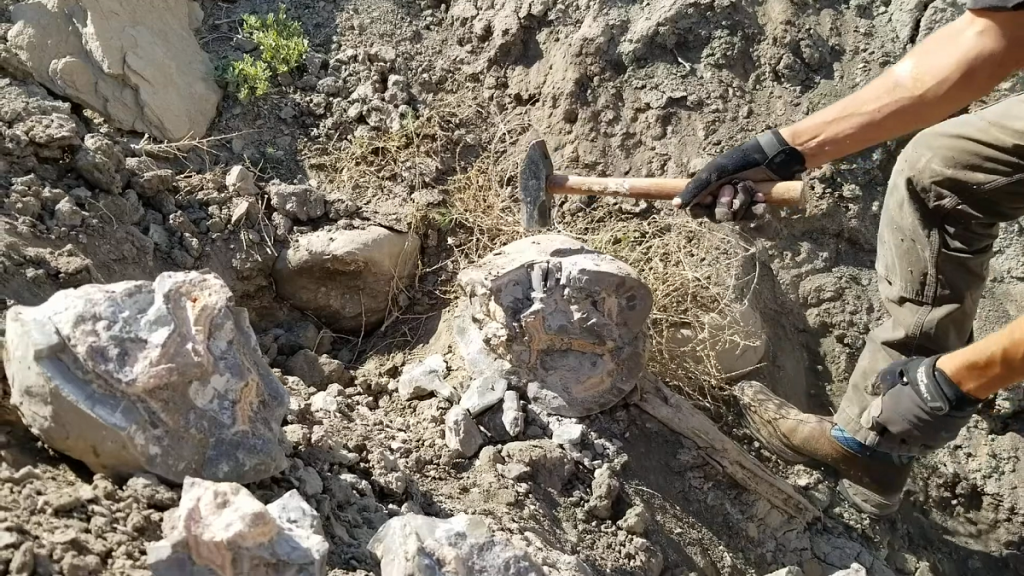
Septarian nodules occur in a few places. Much of the material commonly seen actually comes from the mineral-rich island of Madagascar. These are generally filled with calcite and a thin layer of aragonite, which is the darker layer between the orange/yellow center and the exterior matrix of mudstone or shale.
The most famous septarian nodules come from Muddy Creek in
This is on BLM land, so make sure to observe the limits. The general rules are not to dig up campsites or recreational areas, to limit collection to what you can use, and to ensure the stones aren’t collected for commercial purposes.
They’re found in lesser amounts along the Gulf of Mexico and in Michigan. Michigan nodules are often referred to as “lightning stones” in the local area.
- Online rock and mineral club for collectors of all levels!
- Find community with like-minded rock and mineral enthusiasts.
- Monthly Giveaways!
- Free Access to Entire Digital Library of Products (current and future products)*


